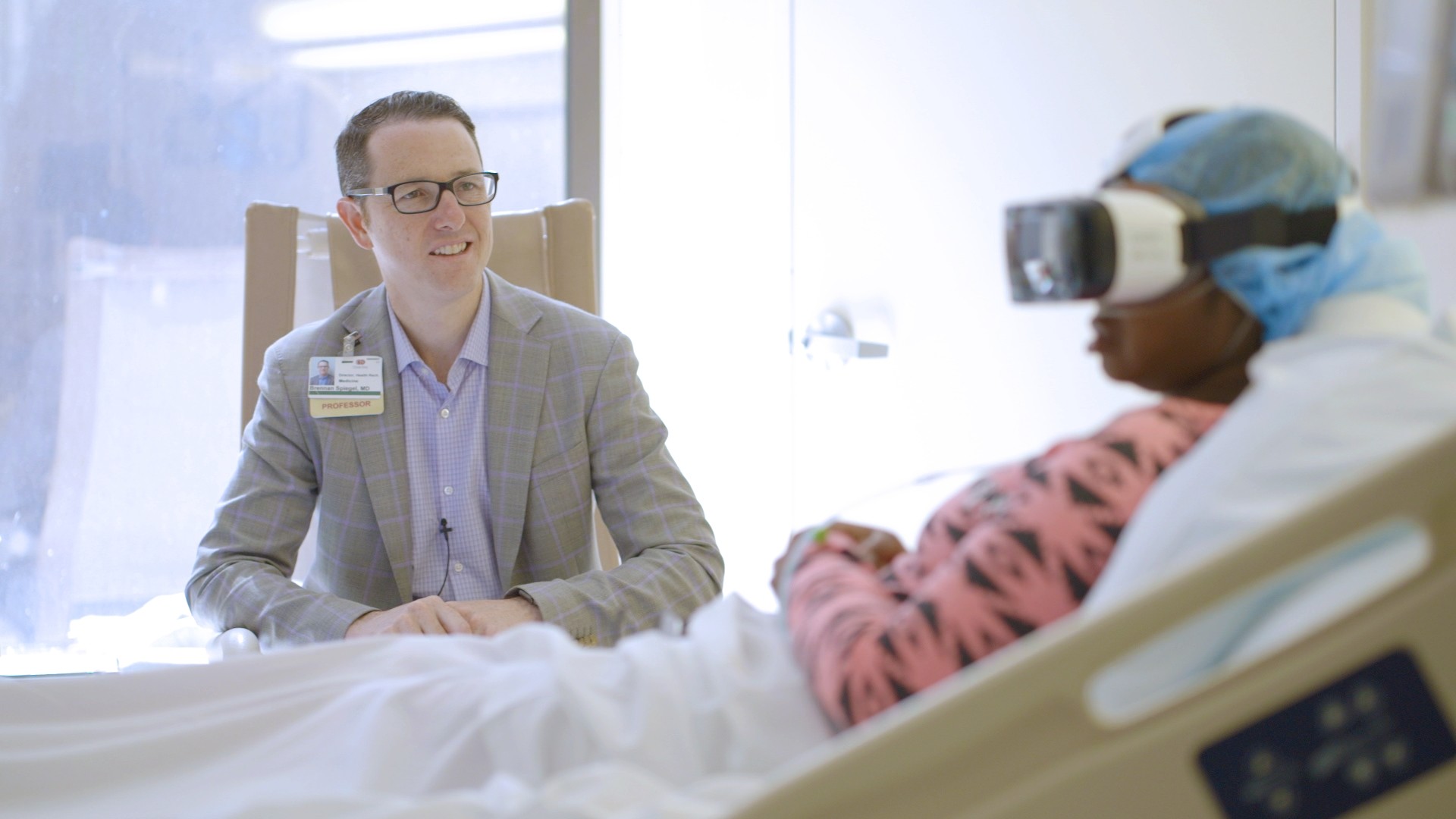LOS ANGELES (Oct. 14, 2020) — In the wake of the opioid addiction crisis that has cost more than 500,000 U.S. lives, medical investigators have focused on finding new methods to help patients control pain. Brennan Spiegel, MD, director of Cedars-Sinai’s Clinical and Translational Science Institute and a pioneer in the medical virtual reality field, spent some time with the Newsroom to explain how virtual reality is helping patients across the medical center.
Newsroom: Cedars-Sinai started experimenting with VR in the hospital setting just five years ago as part of a limited study. Where do we stand now? How have we been using virtual reality in the hospital for the past few years?
Spiegel: In the past few years, we have completed several hospital-wide studies on the use of virtual reality. We completed three studies on using virtual reality to help mitigate pain. Those studies involved more than 300 patients and showed that VR works to reduce pain and can be used effectively to complement traditional medicine.
Together with colleagues in our Obstetrics & Gynecology Department, we studied the use of virtual reality during childbirth as a non-pharmaceutical method of reducing the stress and pain of labor. One of our recent studies used virtual reality for children undergoing infusions for inflammatory bowel disease.
Overall, virtual reality has been studied and now is being used in myriad ways across Cedars-Sinai. We created a website with information about our VR program at Cedars-Sinai, including links to our published research.
There are now well over 5,000 published studies supporting different applications of VR. The FDA has acknowledged VR as a new field. It is no longer an issue of whether using VR is scientifically valid, but whether we are committed to using it in healthcare. Now we have to answer the non-scientific question: Do we have the necessary resources to offer VR to our patients as a therapy alongside traditional medicine?
What does the future of VR look like at Cedars-Sinai?
Our hope is to eventually establish a full-service clinical operation to support the uses of virtual reality in clinical practice, not just for pain but also for anxiety, depression and other conditions. We are looking to partner with Cedars-Sinai Cancer because patients undergoing cancer treatment experience not just pain, but often anxiety and depression as well. We are optimistic that VR can help in all of those areas. We also are working closely with the Cedars-Sinai Department of Psychiatry.
What VR-related research projects are underway now?
Currently there are several ongoing studies at Cedars-Sinai. Together with the Department of Orthopaedics, and thanks to a nearly $4 million grant from the National Institutes of Health, we are studying 360 patients with chronic lower back pain using three different types of VR. One group will receive distraction VR, such as swimming with dolphins or lying on an immersive beach. A second group will receive VR with cognitive behavioral therapy featuring skills such as biofeedback. The third type of VR is what we call sham VR, where you watch videos in the VR headset but it’s not 360 degrees. The study will follow patients for up to 90 days and monitor their pain outcomes, medication requirements and other important clinical benefits.
Your book VRx: How Virtual Therapeutics Will Revolutionize Medicine published this month. Tell us about the book.
The book is not written solely for medical colleagues. It is written for a lay audience with an interest in psychology and mind-body medicine. It is for the curious reader who is interested in science. The book explores what we’ve learned from our patients, both at Cedars-Sinai and in studies done by researchers around the world. I wrote the book to shed light on the new field and tell the story of patients and researchers on the front lines of immersive therapeutics. The book explores what VR teaches us about our own consciousness. It brings together philosophy, psychology, technology and medicine.
Read more from Discoveries magazine: Innovation 10: The XR Files
